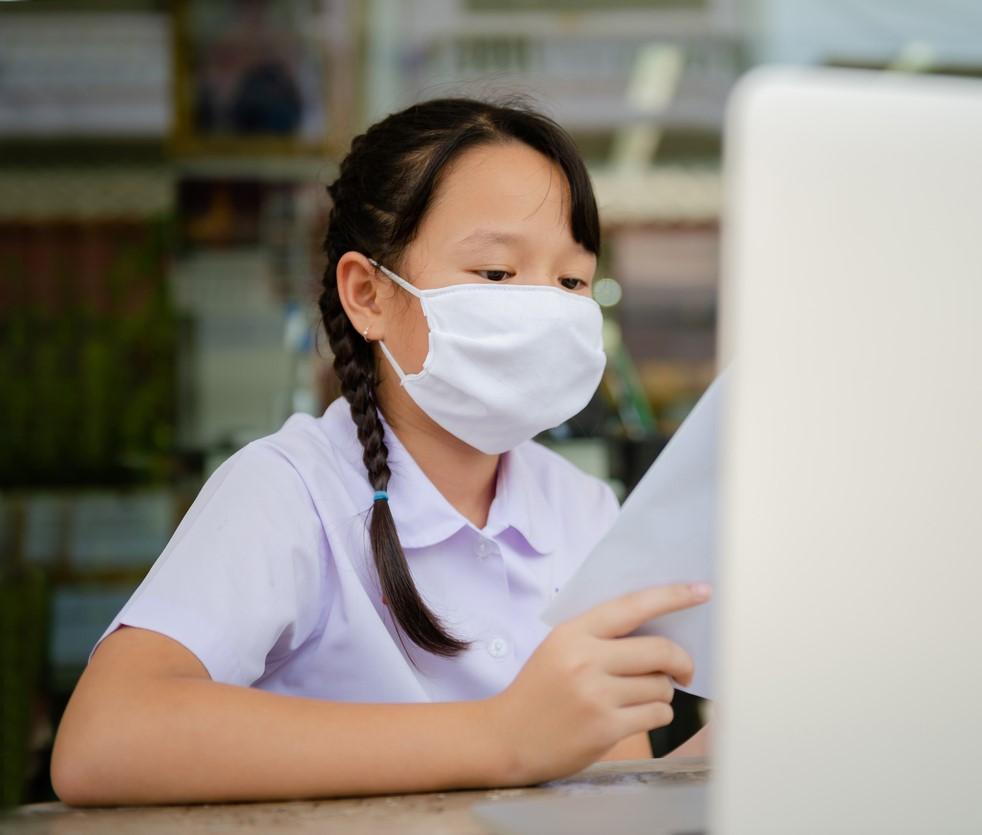Weighing the public health risks posed by the coronavirus against the educational risks of not having in-person instruction, and the impact that closed schools could have on existing racial and social inequities, a new report from the National Academy of Sciences, Engineering, and Medicine (NAS) is urging school districts to prioritize reopening, with an emphasis on providing full-time, in-person instruction of children in grades K-5 and special needs students.
But the report, published yesterday, acknowledges that reopening schools in the midst of COVID-19 will be a difficult task requiring resources and input from a variety of stakeholders. Schools will have to implement costly mitigation strategies to limit transmission of the virus, staffing will be a challenge, closures could occur based on the progress of the pandemic, and federal and state governments will need to provide significant financial help to districts and schools to enable them to reopen.
The report also notes that reopening schools cannot be 100% safe as long as the pandemic persists.
"Whether to reopen school buildings for the 2020–2021 school year is one of the most consequential and complex decisions many education leaders will ever have to make," the report said. "While the benefits of reopening for students, families, and communities are clear, leaders must also take into account the health risks to school personnel and students' families, as well as the practicality and cost of the mitigation strategies that will be needed to operate safely."
Districts face difficult decisions
The report comes as the school year approaches and school districts around the nation grapple with the decision on whether to fully reopen, return to the distance-learning mode that they adopted in the spring, or create a hybrid model.
Some school districts in states where the pandemic is raging, including the Los Angeles Unified school district, have already announced that they will not reopen and will continue with online learning. Schools in New York City, which has seen a significant reduction in coronavirus cases since peaking in April, will partially reopen, with children receiving in-person instruction from 1 to 3 days a week.
"We all know the best place for students to learn is in a school setting," LA Unified Superintendent Austin Beutner told the Los Angeles Times. "And as much as we want to be back at schools and have students back at schools—we can't do it until it's safe and appropriate."
Michael Osterholm, PhD, director of the University of Minnesota's Center for Infectious Disease Research and Policy (publisher of CIDRAP News), said in today's episode of the Osterholm Update podcast that the question of reopening schools is one of the most difficult he's dealt with during the pandemic.
"How we deal with the school issue is probably going to be one of the defining moments of how we learn to live with COVID-19," Osterholm said. "I don't think there is a single answer; I think there are going to be multiple answers to this, and it's going to be up to our creativity to deal with this."
The NAS report acknowledges that, given the current state of the pandemic, many districts are likely to use a blend of in-person and distance learning. And while the evidence to date suggests that children and youth are at low risk of serious illness or death from COVID-19, many significant safety issues will make reopening school buildings a challenge.
For one, there is insufficient evidence to determine how contagious children are, or how likely they are to contract the virus. In addition, black, LatinX, and indigenous children, along with low-income children and those with underlying conditions, have been disproportionately affected by COVID-19. And many teachers and staff members are at greater risk of serious consequences from infection.
But the authors of the report—a committee made up of experts in education, medicine, and epidemiology—concluded that because of the potential risks for students of keeping schools closed, districts should prioritize reopening with an emphasis on in-person learning. Distance learning cannot take the place of in-person interaction, they said, especially for younger children and special needs students who would be best served by in-person instruction, and disparities in access to reliable internet and electronic devices could compound already existing inequities.
"The risks of not having face-to-face learning are especially high for young children, who may suffer long-term consequences academically if they fall behind in the early grades," the committee wrote.
In addition, they cited the benefits that schools provide for families beyond education, including reliable childcare, meals, and mental health services.
"Reopening school buildings will allow schools to provide these supports and services more easily and in a more complete way," they wrote.
Mitigation strategies
The report provides several mitigation strategies to help school districts reopen schools and protect students and teachers, many of which are recommended by the Centers for Disease Control and Prevention. It calls for school districts to provide surgical masks to all teachers and staff and hand sanitizer for everyone who enters a school building, encourage mask wearing and hand hygiene among students and staff, reorganize classrooms to promote physical distancing, limit large gatherings, prioritize cleaning, ventilation, and air filtration, and create a culture of health and safety.
Implementing all these measures will not come cheap. Using a recent estimate reported by EdWeek, the committee suggests that a school district with 3,269 students, 8 buildings, and 329 staff members could spend as much as $1,780,000 for the 2020-21 school year. That's why the committee urges state and federal governments to provide school districts with significant resources.
"Many districts will be unable to afford implementing the entire suite of mitigation measures, potentially leaving students and staff in those districts at greater risk of infection," the committee wrote. "In the absence of substantial financial support from the federal government and state governments, it is likely that the communities most impacted by COVID-19 will see even worse health outcomes in the wake of reopening schools."
The report also calls for state public health departments to assess school facilities to ensure they meet minimum health and safety standards and consult with schools on their mitigation plans, and for states to provide schools with access to public health expertise if they are in areas where public health departments are short-staffed. State, local, and education leaders are encouraged to create decision-making task forces that can gather input from various stakeholders. And school districts should take into account existing disparities within and across schools.
"There are no easy answers, no quick and affordable policy decisions that will enable children to reenter schools safely while simultaneously addressing the profound systemic inequities this moment in time has laid bare," the committee wrote. "Addressing these challenges will require the coordinated and concerted efforts of all sectors in the United States. It will require commitments to equitable school financing, to engaging communities in the complicated and emotional decision-making related to reopening schools, and to centering equity in the discussions that surround those decisions."
In its final recommendation, the committee called for more research into children and transmission of COVID-19, the role of airborne transmission, how schools could contribute to community spread, and the effectiveness of mitigation strategies.






















